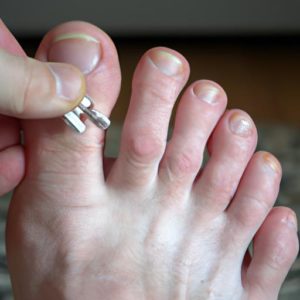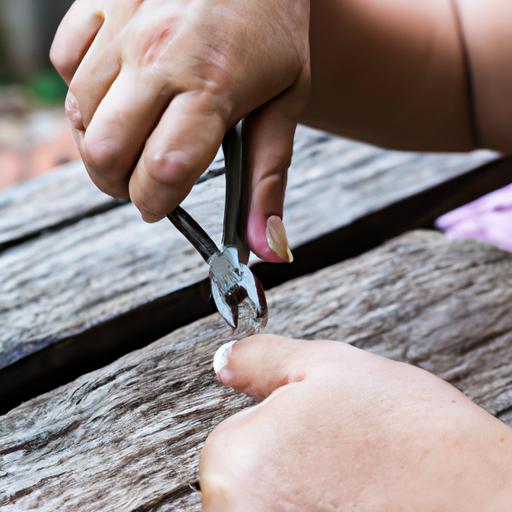Table of Contents
If you’ve ever had the disconcerting experience of seeing your toenail turn black, you know how worrisome and unpleasant it can be. Known as subungual hematoma, a black toenail is when blood gathers underneath the nail, resulting in a dark or black color. It’s important to note that at times, a black toenail may indicate a more serious underlying health issue.
Causes of Black Toenail
Trauma or Injury
One of the most frequent causes of black toenails is physical injury. This can happen when heavy objects are dropped on the toe, the toe is stubbed, or when engaging in high-impact sports that put pressure on the toes. Trauma to the toenail causes the blood vessels beneath it to rupture, leading to the buildup of blood and subsequent discoloration.
Fungal Infection
Another cause of black toenails is a fungal infection, which can occur due to poor foot hygiene or wearing tight and uncomfortable shoes. Fungal infections cause the toenail to thicken, become brittle, and change color. In severe cases, the entire nail may fall off, leaving the nail bed exposed.
Other causes of black toenails include bacterial infections, blood clotting disorders, and even skin cancer. Identifying the root cause is crucial for appropriate treatment and to avoid potential complications.
Symptoms of Black Toenail
Most individuals with black toenails experience pain and discomfort in the affected area. The level of pain can vary from mild to severe, making walking or wearing shoes uncomfortable. Additionally, the toenail may become swollen and inflamed, making it difficult to wear snug shoes. In some instances, the nail may become loose and separate from the nail bed.
The most noticeable symptom of a black toenail is the discoloration and darkening of the nail itself. The color can be black, purple, or blue, depending on the severity of the injury or underlying condition. If left untreated, the nail may become thick, brittle, and prone to further damage and infection.
Diagnosis and Treatment
If you observe any symptoms of a black toenail, it’s crucial to seek prompt medical attention. This will enable your doctor to examine the toenail, inquire about your medical history, and gather information about recent injuries or activities that could have caused the issue. In some cases, medical tests and imaging, such as X-rays or MRIs, may be necessary to determine the extent of the injury or underlying condition.
The treatment for a black toenail depends on the underlying cause and the severity of the condition. In milder cases, your doctor may suggest medications and topical treatments, such as antifungal creams or antibiotics, to resolve any infections or prevent further harm. For severe cases, surgical intervention or other medical procedures may be necessary to remove the affected toenail and safeguard the nail bed from additional damage.
In addition to medical treatment, there are various home remedies and lifestyle changes that can help prevent and manage black toenails. Practicing good foot hygiene, wearing well-fitted and comfortable shoes, and avoiding repetitive activities that could traumatize the toenail are all beneficial. Applying natural remedies like tea tree oil and vinegar can also alleviate symptoms and expedite the healing process.




